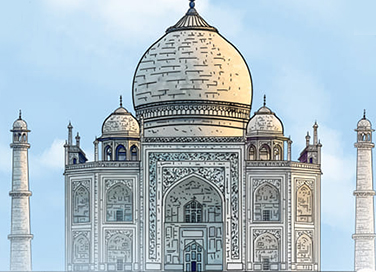World Heritage Sites in India
- January 6, 2020


World Heritage Sites in India
- January 6, 2020
India is home to 38 UNESCO World Heritage Sites.
From the Western Ghats mountain range to the Great Himalayan National Park, from the hill forts of Rajasthan to monuments of Hampi, and from the Sun Temple of Konark to the churches and convents of Goa, UNESCO has identified 38 World Heritage Sites in India. We have the sixth-largest number of heritage sites in the world. These sites are of cultural, natural, and historical importance, and are legally protected by international treaties.
Here is the complete list.
To receive more such stories in your Inbox & WhatsApp, Please share your Email and Mobile number.
To receive more such stories in your Inbox & WhatsApp, Please share your Email and Mobile number.

Comic of The Month
The Naval Journey of India Book I
This book is the first of a three-book series that takes a deep and detailed look at India's Naval History and a deep insight into the lives of our men and women in white. But any series on the Indian Navy has to start at the very beginning - exploring India's celebrated maritime history. Join our little hero, Bharat, and his grandfather, Commodore Sagar, as they sail into the deep blue waters of time. Book I of The Naval Journey of India takes a sweeping look at India's maritime endeavours, how the seas impacted us over millennia and how the oceans made us who we are.